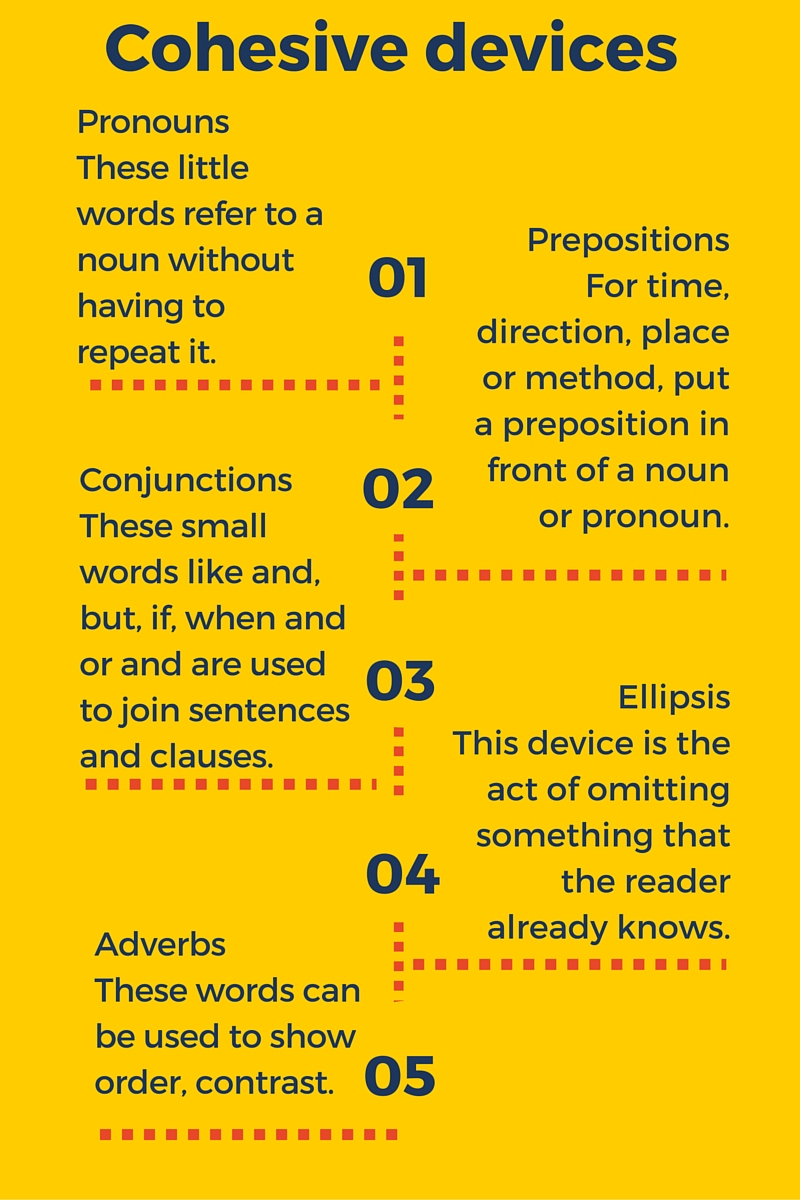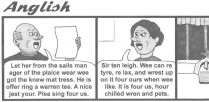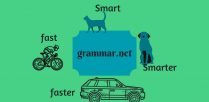Cohesion in English grammar is the logical organization of phrases, clauses and sentences to make them easier to read. The most common way to organize writing in this way is through cohesive devices.
Types of Cohesive Devices
Pronouns
These little words refer to a noun without having to repeat it.
“Bob decided to eat Bob’s lunch while sitting in Bob’s car.”
“Bob decided to eat his lunch while sitting in his car.”
“The fawn closely followed the fawn’s mother.”
“The fawn closely followed her mother.”
Prepositions
For time, direction, place or method, put a preposition in front of a noun or pronoun. This shows a relationship between the noun and the rest of the sentence.
“The Williams got home from vacation on Monday.”
“Many vacation here because of the good fishing.”
“My favorite show comes on at 6 pm.”
Conjunctions
These small words like and, but, if, when and or and are used to join sentences and clauses.
“Bert stopped by the store and bought a gallon of milk.”
“She would have stopped by but she was running late.”
“A snake will probably bite you if you step on it.”
“Look both ways when you cross the street.”
“I do not like black licorice, butter beans or chili.”
Adverbs
These words can be used to show order, contrast and such. When used at the front of a sentence with a comma, they call attention to what is to follow.
“Frank talked about Maine for years; surprisingly, he moved back to Texas after two months.”
“I fell off the picnic table. Fortunately, the grass was thick.”
Ellipsis
This device is the act of omitting something that the reader already knows.
“How many head of cattle did you sell?” “Twenty.”







